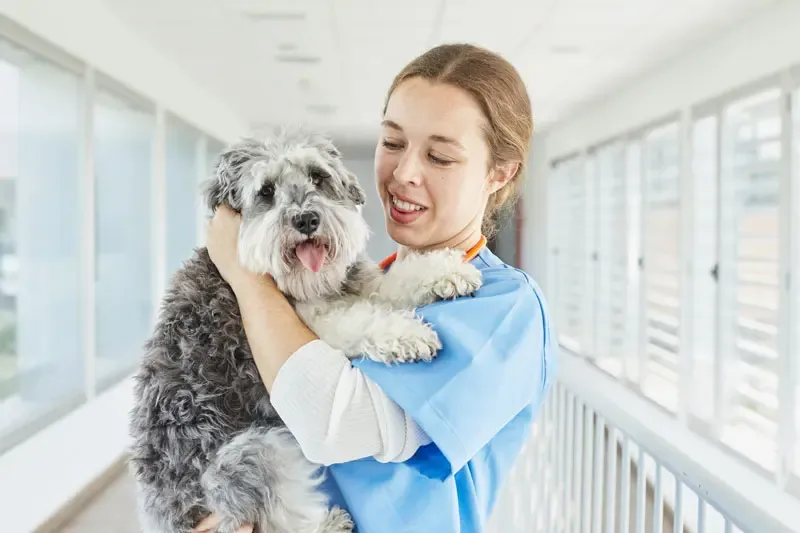Introduction
Spasms in cats are characterised by the presence of a brief twitching motion that occurs automatically . Spasms are considered involuntary movements that can stem from a range of origins and which affect muscle groups in different areas of the body (limbs, trunk or head).1,2 One of the possible causes of muscle spasms in cats is feline hyperaesthesia syndrome (FHS) .
What is feline hyperaesthesia syndrome?
FHS has been described in the veterinary literature, but it is still poorly understood, and its aetiology remains unknown .
- Some authors believe it is a behavioural problem of an obsessive–compulsive nature , akin to Tourette syndrome in humans, and it can be triggered by different environmental factors (e.g., skin allergies) or stressful social situations (e.g., the introduction or departure of other animals or people in the cat’s habitat or aggression between cats).
- Others have linked FHS to epileptic disorders .
- It has also been suggested that FHS is a type of myopathy similar to that of inclusion body myositis in humans, which is a degenerative muscle disease with a secondary immune-mediated response.1-5
FHS can affect both males and females of any age (although publications show it is more frequent in cats aged 1–8 years) and breed (again, some reports suggest, however, that Abyssinians, Burmese, Himalayan and Siamese cats may be more predisposed to the condition.1,2
Interestingly, in a retrospective study, all seven cases of FHS were in domestic short-haired cats, the median age at clinical onset was 1 year and six out of seven subjects were male.3
CLINICAL SIGNS OF FHS
The clinical signs of FHS include the observation of rippling skin musculature along the patient’s back , spasms of the epaxial musculature in the thoracolumbar region , licking and intense biting of the spine, flanks, hindlimbs and tail, agitation, excessive vocalisation, mydriasis and violence towards inanimate objects or people. Some cats may start running around frenetically for no apparent reason and display hallucinatory behaviour . Palpation of the lumbar spine may invoke a painful response in some cats.
These signs are normally sporadic in nature and usually last 1–5 minutes .
There is no specific diagnostic test for FHS , so it is normally diagnosed based on the patient’s clinical history and signs . In most cases the patient’s blood count, blood chemistry, urinalysis, infectious disease serology, imaging tests and cerebrospinal fluid analysis all return normal results.1,2
Controlling spasms in cats with FHS
Although various therapeutic options have been proposed, no treatment has proved completely effective in controlling the spasms and other clinical manifestations of FHS in all patients. The prognosis is variable and depends on the identification of the underlying problem and the animal’s initial response to the treatment.
- The initial recommendation is to start treatment with a glucocorticoid , for example prednisolone.
- Other therapeutic options include the use of behaviour modifying drugs . Accordingly, tricyclic antidepressants , e.g., amitriptyline (2 mg/kg/24 hours or 5–10 mg/cat/24 hours) and clomipramine (1–5 mg/cat/12–24 hours), and serotonin reuptake inhibitors , such as paroxetine (0.5 mg/kg/24 hours) and fluoxetine (0.5–4 mg/cat/24 hours), have been recommended.
- If this treatment is ineffective, anticonvulsants can be given, for instance, phenobarbital (3 mg/kg/12 hours and dose adjusted to maintain blood levels at 20–40 μg/mL), gabapentin, pregabalin or levetiracetam.
- It is also a good idea to minimise anystressful situations the patient may encounter, exercise strict control over any flea infestations and skin allergies and even supplementing their diet with coenzyme Q10 and omega-3 fatty acids may have certain beneficial effects.1,2
Conclusions
FHS is still a relatively unknown entity and should be suspected whenever owners describe the observation of muscle spasms across their cat’s trunk region. If the owner could record a video of the animal when it is displaying the reported clinical signs, it may prove very useful in reaching a diagnosis. Regarding treatment, the author has had success with both prednisolone and gabapentin, although definitive conclusions cannot be drawn given the small number of patients treated.








